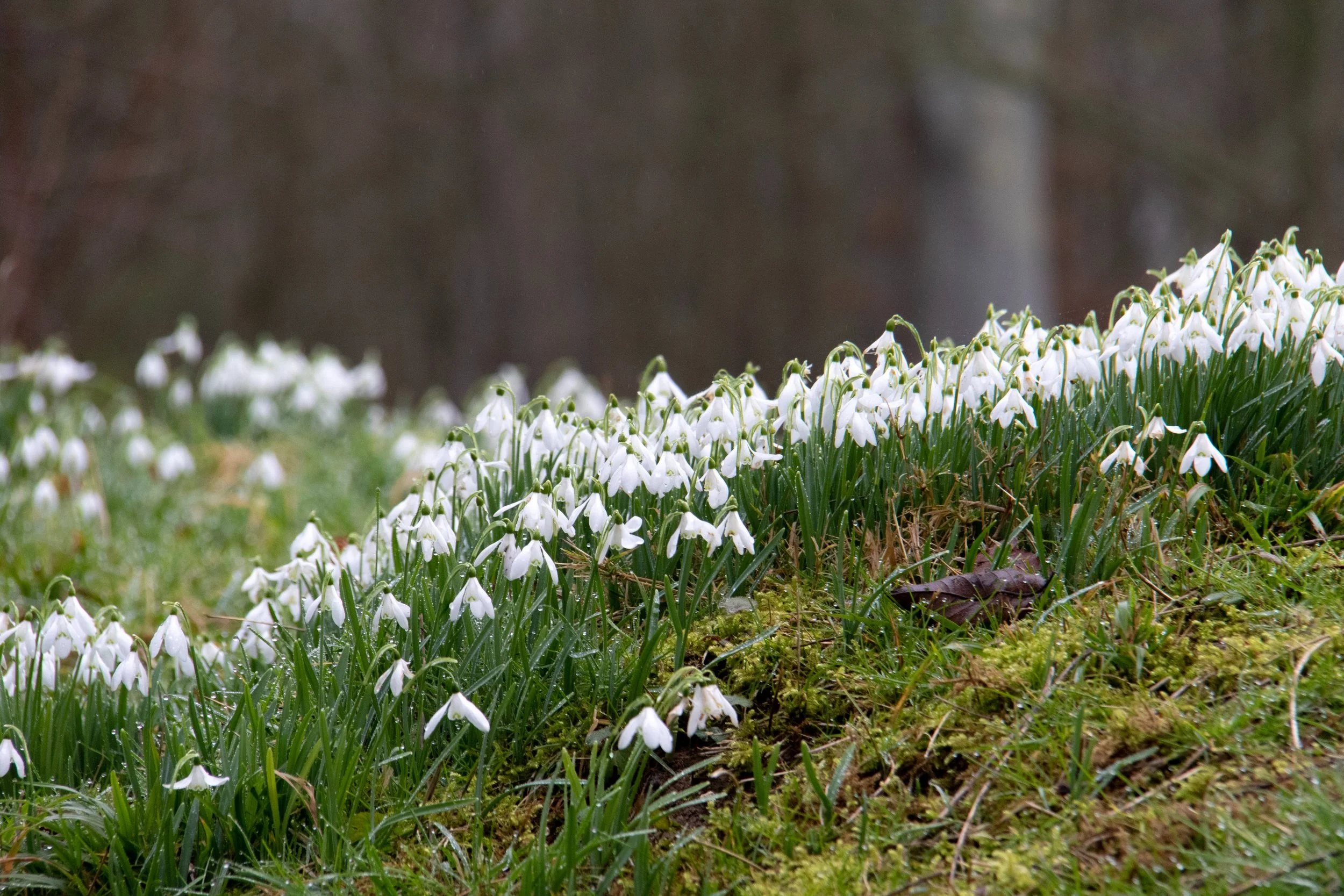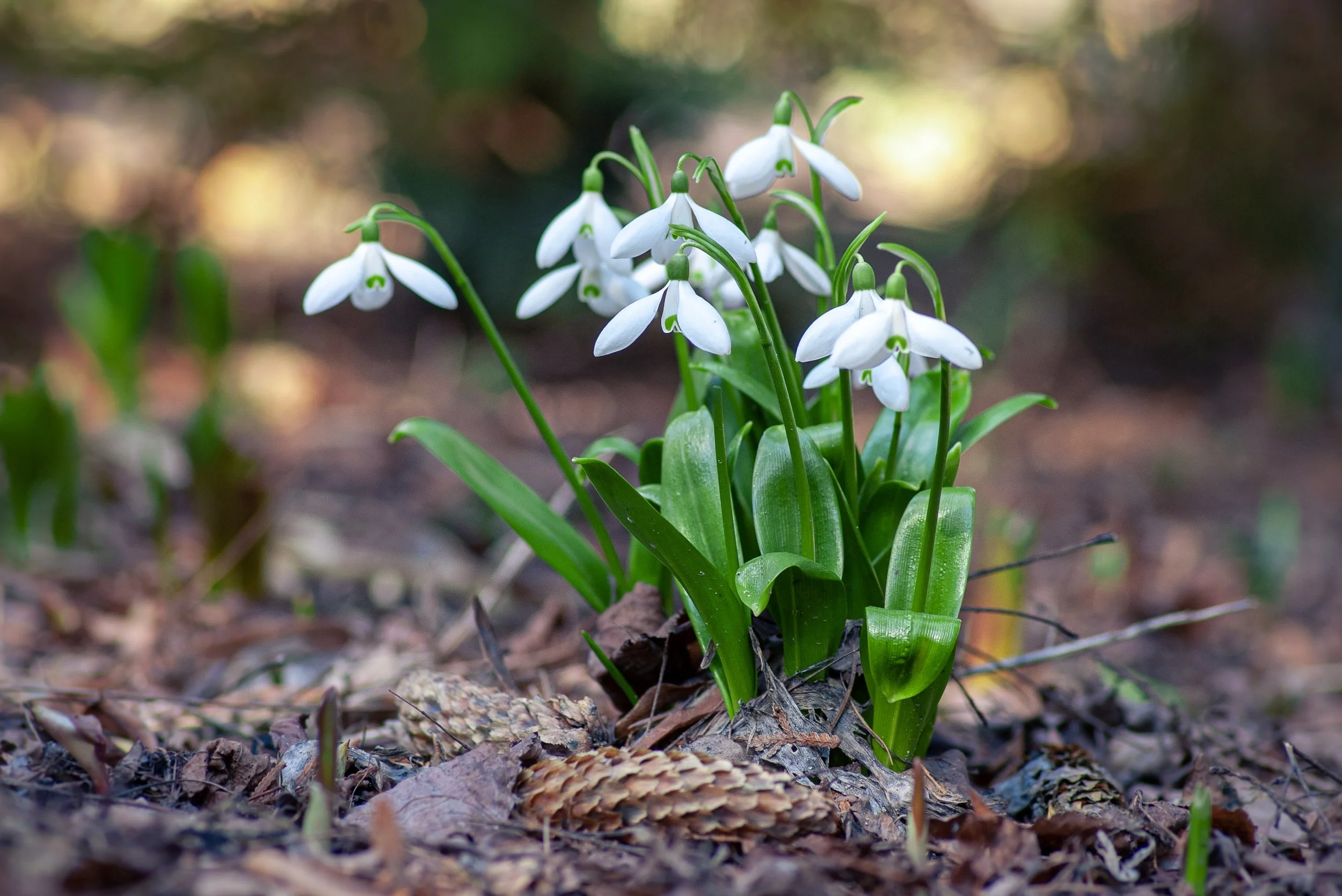Wellness walks: Snowdrops in Gloucestershire
/Colesbourne Gardens
There are few places in the UK where snowdrops can be seen in such splendour as Colesbourne Gardens. The gardens' collection of snowdrops is one of the most comprehensive in the country, with more than 350 cultivars in the collection (although not all growing throughout the estate at once). The snowdrop collection at Colesbourne Park originated in the plantings made by Henry John Elwes (1846-1922). According to Country Life (1999) it is ‘England’s greatest snowdrop garden.’
“In 1874 Henry Elwes had discovered Galanthus Elwesii whilst travelling in western Turkey and he became one of the prominent galanthophiles of his day. In early April he was in the mountains near Smyrna (modern Izmir) and came across the fine large snowdrop which was named after him, Galanthus elwesii. Before leaving Turkey he arranged for the wide variety of bulbs he had collected to be sent back to England later in the season; the first of the many millions exported ever since.”
- https://www.colesbournegardens.org.uk/estate-history/hj-elwes/
A treasure trove of snowdrops
Colesbourne Gardens is a beautiful place to see snowdrops. The site is a treasure trove of these beautiful flowers, and the gardens are open to the public from Saturday 28th January 2023 until Sunday 26th February 2023 from 1pm-4:30pm. The gardens comprise approximately 10 acres of formal snowdrop walks around the house and lake, with further parkland and an arboretum around the house to explore further afield.
Refreshments will be available in the courtyard building. Each weekend a different charity will be providing hot drinks and cakes in order to raise much needed funds for both local and national causes. Toilet facilities are located in the courtyard with a plant sales stall.
The Colesbourne walk
The Colesbourne walk is a trail mostly on paths around the gardens and the majority is accessible to wheelchairs (although some parts are not) depending upon the weather, which can sometimes work against the landscape. Dogs are welcome, if kept on a short lead.
The walk takes you through woodland, with views of lake and garden, as well as into various smaller gardens, and a new Pinetum.
Entry prices for Colesbourne Gardens are as follows:
Adults £10.00
There is no need to book in advance, please turn up and pay at the gate.
Children under 16 are free.
Wheelchair users free. Accompanying persons full price.
Cerney House and Garden
Another beautiful spot to see snowdrops in the locality is Cerney House and Garden. In February and early March there is a beautiful array throughout the woodland trail. This location is wonderful all year round, with bluebells, herbs, roses and tulips throughout the different seasons. The walled garden is set over 3.5 acres and is described by Country Living as "what most people aspire to in their gardens – and few achieve".
Entry details for Cerney House and Garden are as follows:
Opening Times
7 days a week
10am-7pm (or till dusk in earlier months)
Including Bank Holidays
There is no need to book
You can pay with cash on arrival.
Adults £6 per person Children £1
Self-service refreshments
Dogs welcome
Some of the garden has disabled access.
For a list of other beautiful Gloucestershire snowdrop walks click here.
Snowdrop cultivars
What is a Snowdrop cultivar?
A cultivar (Cultivated variety) is a plant or flower that has been cultivated, rather than occurring naturally in the wild. Sometimes these are bred by cross-pollination between two different species of plant, but most are developed through selective breeding by humans. A cultivar can be thought of as the commonly used name for a new variety of plant which has been propagated from seed, cuttings and grafting onto roots.
You can purchase snowdrops directly from Colesbourne Gardens, yet it can be tricky to know what you're looking at when you see them! However, the website offers straightforward descriptions to help you choose:
https://www.colesbournegardens.org.uk/snowdrops-for-sale/
Cultivating snowdrops
The following are some useful tips for growing snowdrops:
The best time to plant bulbs is in the autumn, ideally from October to November. They can also be planted in spring, if you are buying plants.
Plant your bulbs about 5cm deep, with the pointed end facing upwards.
Water them in well after planting and leave them alone until they're visible above ground level (usually after about six weeks). Water carefully during winter so as not to damage the foliage or bulb plate - water will be needed only when it's very dry outside (this should be once every 2-3 weeks). Don't let the soil dry out completely though - if it does become bone-dry then you may find that your bulbs won't flower next year!
Snowdrop walks and wellbeing
Walking is good for your body and mind, helping to keep you active, healthy and happy.
Studies show that walking can:
help with depression and anxiety
improve sleep quality
promote weight loss or weight maintenance
improve cardiovascular health including blood pressure and diabetes control
Conclusion
This is a special place to visit and see a large variety of snowdrops in bloom, right on our doorstep. It’s also a lovely way to enjoy some time outdoors and reconnect with nature.






